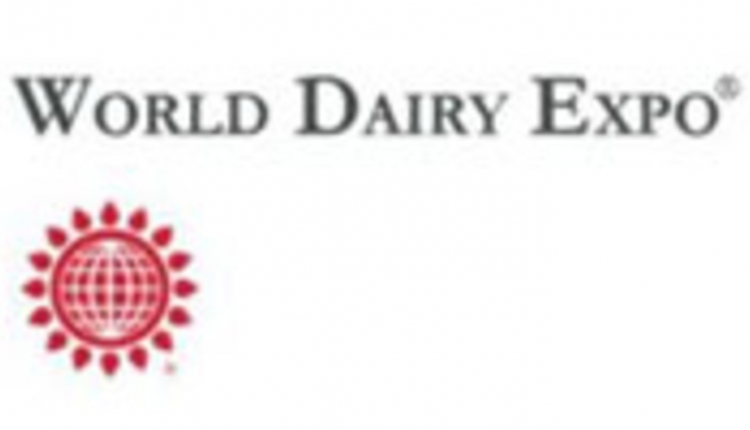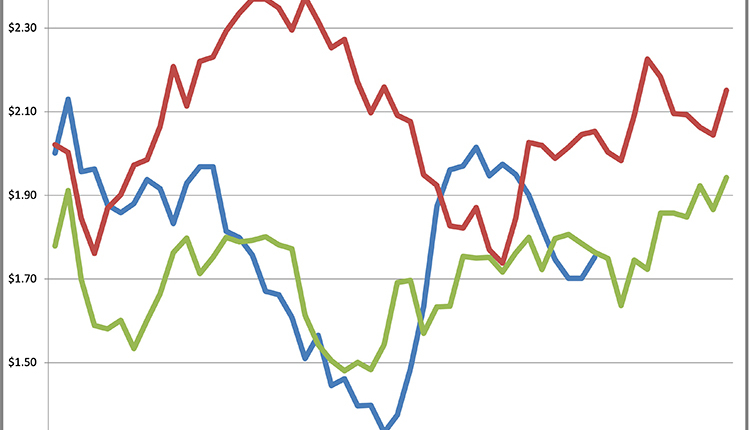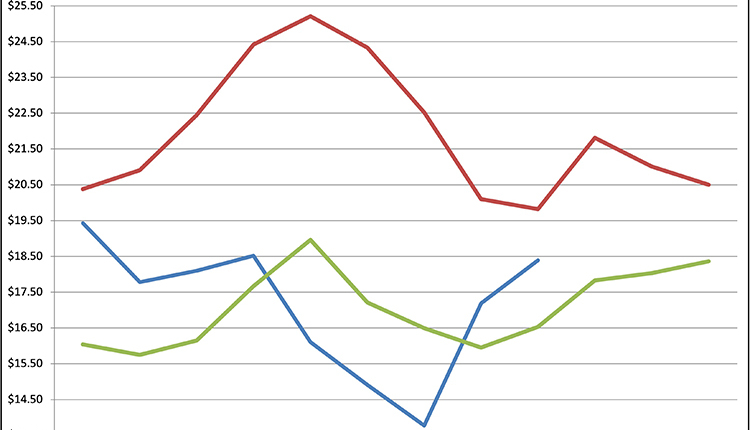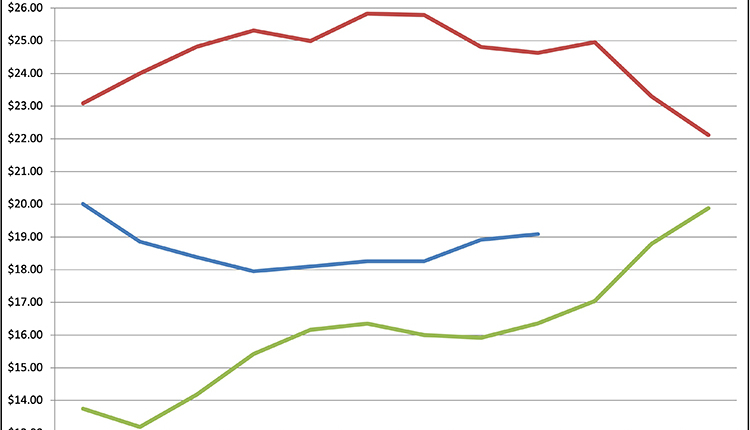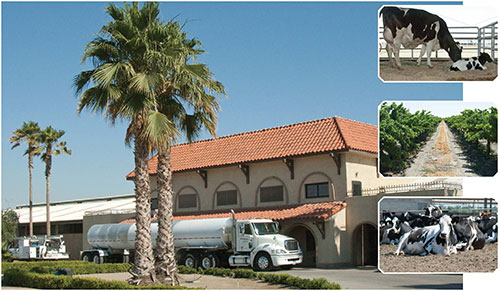
There are few dairies in the world that have been involved with embryo transfer longer than Maddox Dairy. Recently, that focus has expanded to include genomic testing and in vitro fertilization. With that commitment to the next generation, calf care also has been stepped up to match the investment in genetics. So much so that others could not only glean insight from their protocols, but more importantly respect their constant pursuit of calf health.
“If you are going to have problems on a dairy, it will likely start with your calves,” explained Steven Maddox Jr., “That is why we have a team of eight employees focused solely on calf care.
“Raising replacements is a vital cog in the efficiency of any dairy operation,” said the fourth-generation Riverdale, Calif., dairyman and crop farmer.
At Maddox Dairy, calf care starts with the farm’s design that includes two maternity barns strategically located at the center of the dairy. Observation and individual care is provided 24 hours a day, seven days a week to help minimize the most stressful period in a cow’s life. On average, 12 calves are born each day at the 3,900-cow dairy.
“We practice just in time calving,” noted Steven, who employs a group pen strategy for soon-to-calve cows. “Once cows start pacing, we move them into individual pens. However, if we miss that opportunity and a cow starts contractions, we leave the cow in the group pens to ensure long-term health,” said the Cal Poly graduate. “Over the years, we’ve learned that retained placentas and metritis rates go way up when we move cows after the calving process has started.”
All calves get sampled
“Mistakes can happen, and this is one way to correct them,” said Steve Sr., noting that there are four to five parentage questions out of roughly 200 tests. “Sometimes it is human error that has happened, but sometimes we put two lower quality (grade) embryos in a recipient and relied on the test to tell us which one produced the calf,” he said.
“The main reason we got started testing all our heifer calves was to reduce crowding in our heifer pens. We wanted to identify the bottom 25 percent to sell by 4 to 5 months of age,” said Steve. By that age, you can see what those heifers look like, so type comes into consideration, too.
“At $40 per test, that is not an insignificant investment, though the extra feed cost saved per month on low-end heifers would more than cover the testing costs for a year,” he said.
At birth, newborns receive colostrum for three straight feedings. Calves are then switched to 1 gallon of pasteurized milk per day and are offered free-choice grain and water. With a herd somatic cell count at 180,000, the hospital pen population is quite low, so higher-quality, saleable milk often gets fed to calves. Maddox Dairy also raises calves for nearby Ruann Dairy headed up by Pat Maddox, brother to Steve.
“We now standardize the pasteurized calf milk to 12 percent solids,” said Steven when discussing fortifying pasteurized whole milk from the dairy. “We were at 11 percent solids, but made the switch to 12 percent to improve growth. We accomplished that goal as 58-day calf weights went from 180 to 200 pounds,” he explained.
Overall death losses are under 3 percent and hover closer to 1.5 percent. Calves do not receive any hay. As for dehorning, dehorning paste is used on Day 2 of life, and all calves are rechecked for horns when moved to group pens. That first move includes eight calves per pen.
A few different strategies
In order to help calves cope with the Central Valley’s higher summer temperatures, the Maddoxes may leave calves in the maternity barn for up to three days as opposed to moving calves to hutches within 24 hours of birth. “It’s 10°F cooler in our maternity barn at that time of year,” said Steven. “The calves seem to acclimate to the heat better by having a few extra days in the barn.”
As for biosecurity and breaking potential disease cycles, cleanliness is stressed. “Since we bucket feed our calves, pails get washed and sanitized after every feeding for the first 21 days after birth,” said Steven.
Major focus on genetics
Both Maddox Dairy and neighboring Ruann Dairy share resources, which includes an in vitro fertilization (IVF) specialist and embryo transplant technicians. All embryos produced at the farms meet the American Embryo Transfer Association and International Embryo Transfer Society regulations. That allows the Maddox family to ship embryos around the world, including the European Union and China. Maddox Dairy produced just over 3,000 embryos last year of which 700 were IVF. That means one half of all calves born on the dairy are the result of ET or IVF.
As for pregnancy rates, fresh embryos have a conception rate of 70 percent on virgin heifers while frozen embryos run 63 percent. IVF embryos run 51 percent in virgin heifers. Among dairy cows, pregnancy rates are 54 percent on fresh conventional embryos and 51 percent on frozen embryos.
Maddox Dairy has placed a great deal of energy in performing IVF on the top 5 percent of the herd since 2007. For the most part, IVF is done on cows. However, the dairy is starting to IVF some young heifers, too. In addition to working on the female side, Maddox Dairy has a robust bull business, and together Maddox and Ruann Dairy farms sell between 1,500 and 1,800 bulls per year to other dairies.
More than dairy
“We are bigger farmers than dairyman,” said Steven, explaining that the entire operation consists of 9,000 acres. “But our heart is dairy. We are dairymen.”
Maddox Dairy was one of the first California farms to utilize freestalls and its parlor dating back to 1981 still serves the dairy well. To date, it has had some 110 million individual cow milkings through it.
As for the land base, the farm grows 2,000 acres of alfalfa with an additional 2,000 acres double-cropped with corn and winter forage for silage or wheat for grain. The farming enterprise also includes 2,500 acres of wine grapes along with 1,500 acres that have been diversified into almond trees. The remaining open acreage is typically rotated between wheat and sugar beets. Across from the main dairy is a separate feed mixing area and a complex that houses the farm’s full line of field equipment.
With an eye on the future, the Maddox family continues to reinvent its business and that includes a shift to more almonds and different wine grapes. It also includes refocused thoughts on the dairy enterprise.
“California is blessed to have 300 of the world’s 350 commercially produced commodity feeds. So we have plenty of access to cheap by-products, but consistency is an issue,” said Steven. “If we can’t get access to a commodity for at least three months, we won’t feed it.” As for one of the cows’ favorite feeds, “Our cows love oranges, especially Cuties that get rejected for human sale due to being oversized.
“Also, we learned in 2009 that we are better off financially to be at or just under capacity in our freestall barns. Cows perform better and we are more efficient,” concluded Steven.
